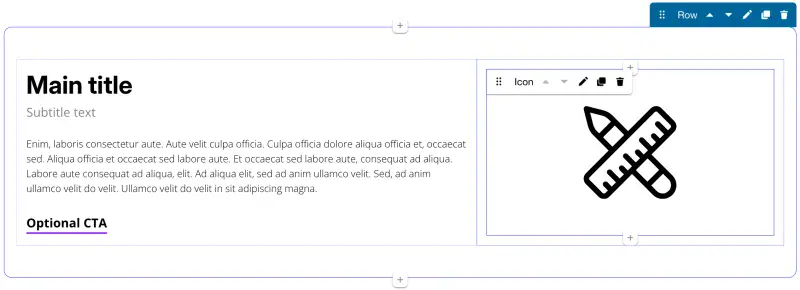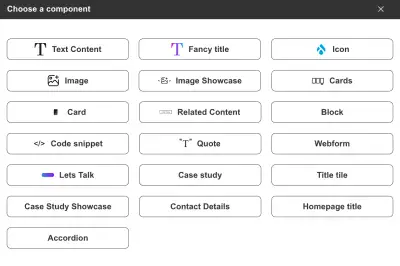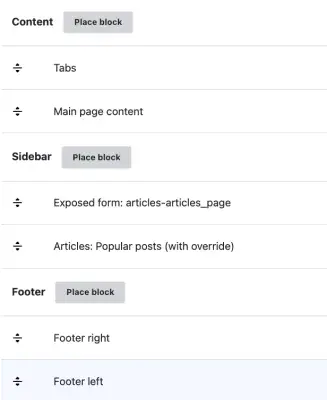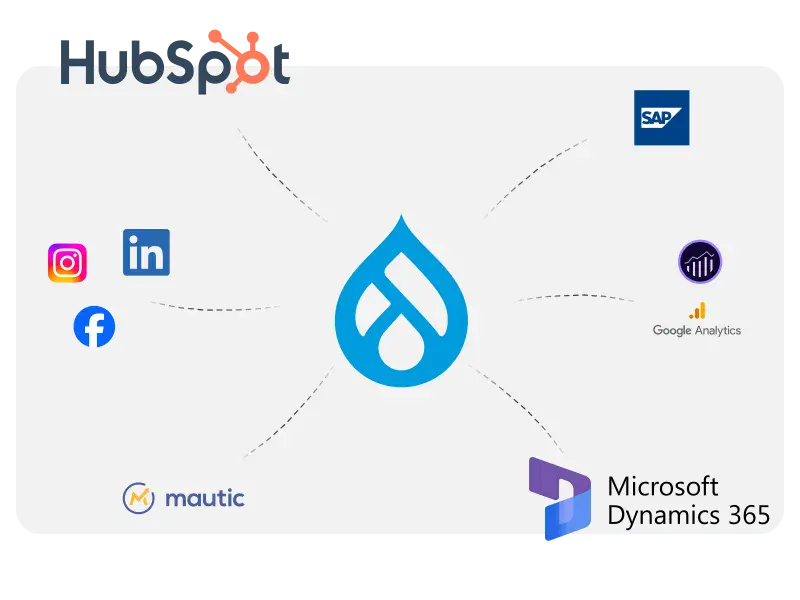Building ABM landing pages in Drupal
Considering Drupal for an ABM marketing campaign?
(Account Based Marketing, that is)
Crafting excellent content is hard enough, but when your CMS/website/editor/platformthingy is awkward and gets in the way?
😱 you could just pull your hair out!
Things have grown a lot since 2010 - content-building expectations nowadays are high, and there are a zillion "from free" PaaS web builders that will help you do it.
So why should you consider Drupal for your Account Based Marketing campaign?

Build fast, edit fast, win the market
Spinning up new custom ABM landing pages should be as easy as building any other content, with no developers involved. With the right permissions and roles set up at the start, your content/client/editorial/sales team can be empowered to create, design and build their content without interference or hindrance.
Media library
You don't need a CDN or a DAM just to store some stock photos and graphs - Drupal's built-in Media Library keeps and collates your imagery, giving quick search and access to your collection. It can handle your Vimeo and YouTube links, too.
But if you do have a DAM already, it's generally quick to get Drupal hooked up and connected.
Clean UI
Quick to learn, and with all the right options available by default. Train your team rapidly and let them loose with minimal ongoing support needs.
Get your menu link, URL alias, metadata and publishing schedule all configured from the start, before the SEO team have a go at you ;)
Flexible content building, any way you want it
We've all seen the usual page elements - but how you get them into the page makes all the difference. There are a bunch of different ways to build content with Drupal. A product of ingenuity, flexibility and distributed international development, Drupal's various supported building models give you the opportunity to choose how you want to build, and flex everything around that.
If you have a design or designer, we can work with them to break the site down into components the right size that will let you build quickly and confidently. Else, we can call on our in-house designer to produce what we need, whether it's just a quick single page or a full site with on-brand look and feel.

Paragraphs
Drupal's most modern way to build content that's mostly unique for each page. Drag and drop your content around the page, easily add, remove, edit or rearrange.
It's a powerful way to build, and it gives you a direct preview of what you've made.
No more flicking back and forth to the edit page. Importantly, the Paragraphs + Layout Builder ecosystem is mature and secure, with no additional subscriptions required.

Blocks
Reusable content meets unique content, meets drag and drop.
While blocks were originally intended for content reuse across defined site pages or sections, the ability to create blocks per-page made them powerful for building unique content too.
Similar to paragraphs, you have the ability to drag and drop things around your live preview.

HTML / body / content field
Layout builders with paragraphs or blocks have generally taken over most content building, as they give much nicer interfaces and improved validation for what you're building
e.g. have you ever seen "[image:wpcontent/2134]" or "[sales-form-id:3912]" in someone's content?
For short form and simple content, it can still work really well and be nice for maintenance. Longer content definitely benefits from the newer developments though.
But if you really really really want to build a big blob of HTML with tokens in it, then that's what we'll give you.
(yes, you could theoretically have Gutenberg. but we will definitely be having a chat first!)
All sorts of custom!
Various Acquia products. Views. Completely custom code. APIs that pull from external sources. So many options!
Ultimately, your system architect will help make the right call on how different things would best be built.
Together, you can reassert the business case for each option and choose the workflow that gets things done best overall.
Personalisation at scale

Seamless CRM & MarTech integration
Whether you run Drupal as the hub for your marketing world, or have it just as another platform in your stack, know that it's ready to integrate deeply with your CRM. Modules for HubSpot, Marketo, Demandbase and more are all ready to go, providing effective tracking and data syncing for your user interactions and journeys.

Use your data
Flexibility is ingrained deep into Drupal's bones, and it's ready for deep customisations. Throw your dev team a spec list, and watch them chew through it at pace! Whichever data model powers your content build in the end, a confident dev team should be able to thread through the systems you need for customising and personalising things.
- Pull data from CRM? Standard.
- Different content for visitors in the Health Industry? Personas - easy.
- Colour changes for existing contacts? Accounts - got it.
- Auto-enroll in the right campaign on sign-up? Challenge me!
If you know how, when and why you need to personalise, a dev team like ComputerMinds can put together just the right workflow for you to have clear and full control. Then, when things go live, let your automations run loose.
Enterprise grade security and compliance
Enjoy peace of mind when dealing with high-value accounts. Drupal's robust security and compliance capabilities are well-known in the industry.
Trusted security
Drupal is used by governments, financial institutions and global enterprises that require mission-critical standards for security and performance.
Compliance ready
Drupal has built-in features and additional contributed modules that help companies meet GDPR and WCAG standards and requirements.
Scalable without sacrificing safety
Building more content faster doesn't mean adding more security risk. Drupal's enterprise-grade security controls mean that security is never compromised for speed, and the ability to self-host (or interrogate your provider's actual hosting setup) means you can meet reporting and governance requirements.
Granular user roles and permissions
Comprehensive options for roles and permissions mean that the right people can control access and the right people can have access to view, edit, publish or schedule content. High-visibility mistakes are reduced through appropriate controls, keeping your campaigns running smoothly.
Continuous security monitoring
The Drupal Security Team (backed by the Drupal Association and the community) actively monitors core and community code for vulnerabilities, and follows industry-standard processes for resolving issues quickly. Drupal modules are known for being well-maintained and secure, and that can't be said for all platforms.